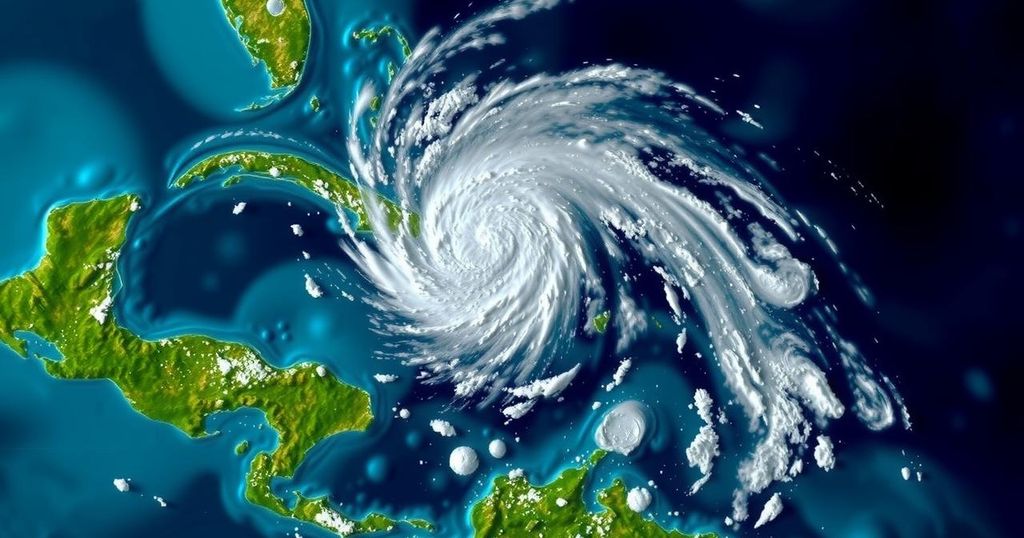Tropical Storm Rafael has transformed into a Category 1 hurricane, with maximum winds of 75 mph, heading toward Cuba, which is still recovering from a previous hurricane that resulted in six fatalities. The storm is expected to bring heavy rain, flooding, and mudslides in the coming days.
On Tuesday, Tropical Storm Rafael was upgraded to a Category 1 hurricane as it approached western Cuba, following a path past Jamaica. With maximum sustained winds reaching 75 mph, the storm poses significant risks, culminating in fears of heavy rain leading to floods and mudslides. Cuba is still coping with the aftermath of a previous hurricane, which claimed six lives and has left the island grappling with ongoing blackouts. As Rafael threatens to strike Cuba imminently, authorities remain vigilant.
Tropical Storm Rafael’s escalation to a hurricane signifies a concerning development for Cuba, an island still reeling from a recent disaster. Forecasts predict Rafael will make landfall shortly, emphasizing the urgency of the situation. The last hurricane had devastating impacts, highlighting Cuba’s vulnerabilities, and Rafael’s trajectory threatens to exacerbate conditions already fraught with challenges such as electrical outages. Moreover, the necessity for preparedness becomes even more vital amidst this impending threat.
In summary, Tropical Storm Rafael has intensified into a Category 1 hurricane, raising alarms in Cuba, which is still recovering from a prior hurricane. With winds now reaching 75 mph, the potential for severe weather-related impacts, including floods and mudslides, threatens to add to the hardships already faced by the Cuban population. The situation calls for vigilance and readiness in anticipation of Rafael’s impending landfall.
Original Source: chicago.suntimes.com






